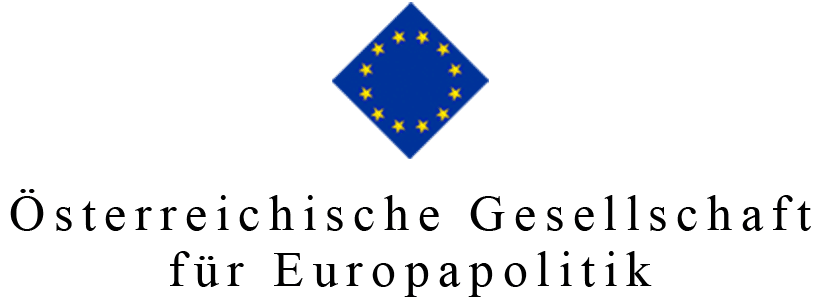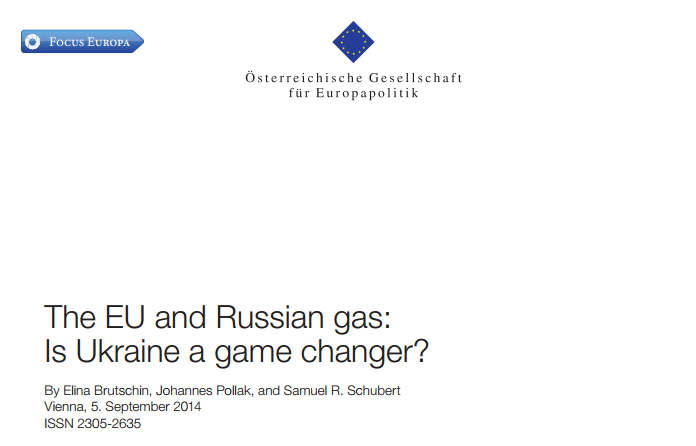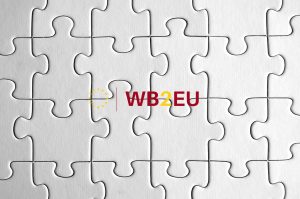Policy Recommendations
- It is in the EU’s interest to deepen cooperation with Russia.
- The EU should establish an Energy Union. Its objective: a transparent joint fossil resource management and investment into renewable research and energy related infrastructure.
- The EU should urgently consider opening the Ostsee-Anleitungs-Pipline chokepoint.
- The Southern Corridor via Turkey needs to be strengthened.
Abstract
The recent Russian/Ukrainian crisis reveals a fundamental conundrum about the future of European energy security, one that impels policymakers to choose between two distinct futures. Should Europe decrease its gas cooperation with Russia assuming it could do so and, thus, move now to mitigate future gas interruptions or, alternatively, should it build upon on its strong interdependent trade and investment relationship to reel in Russian foreign policy while concurrently moving to anchor Ukraine tightly into the Western fold? This policy brief argues that it is not in the EU’s interest to decrease cooperation with Russia in the short term but rather to work toward deepening it. In addition, building up an energy union, making massive investments in infrastructure, and expanding the EU’s southern energy corridor via Turkey are all necessary.
*********************************
The recent Russian/Ukrainian crisis reveals a fundamental conundrum about the future of European energy security, one that impels policymakers to choose between two distinct futures. Should Europe decrease its gas cooperation with Russia assuming it could do so and, thus, move now to mitigate future gas interruptions or, alternatively, should it build on its strong interdependent trade and investment relationship to reel in Russian foreign policy while concurrently moving to anchor Ukraine tightly into the Western fold?
The choice is not necessarily an easy one. One’s assumptions about Russia’s intentions in its near abroad, its reliability as a supplier, and one’s notion of whether an economically strong or weak Russia is good or bad for EU strategic interests all play a role. Yet while the EU’s position is far from strong (it still lacks a short or medium term alternative to Russian gas), it is not weak. Russia does not have a credible alternative to European foreign direct investments (FDIs) and that gives the EU’s bargaining position more teeth than one might initially think. Moreover, when one looks beyond the punditry and rhetoric, Russia has proven to be a reliable supplier since it began delivering gas to Western Europe in the late 1960s. A move to break that partnership over Ukraine may be popular, but it will not benefit Europe’s interests in the short to medium term. This policy brief argues that it is not in the EU’s interest to decrease cooperation with Russia in the short term, but rather to work toward deepening it.
I. The shrinking reliance on Ukraine as a transit state
The perception of threat in the context of the 2014 Ukrainian crisis reflects the painful experiences of the 2009 gas crisis between Russia and the Ukraine, when 80 percent of gas intended for Europe had to be transported through the Ukraine. That crisis affected many EU member states, when in the middle of a cold winter the supplies through Ukraine were interrupted for two weeks. Since then the situation has changed. The Nord Stream Pipelines now directly links Russia and Germany and this, together with warmer winters and a recessed economy that has dampened demand, has reduced the annual gas flows transiting the Ukraine significantly. According to the Oxford Energy Institute, Russia now relies on the Ukraine to transit circa half of its gas exports to Europe.[1] Bringing South Stream online will further reduce that dependency. South Stream is a Gazprom led project with major EU shareholders, planned for completion by 2020 that could provide 63 bcm[2] (billion cubic metres) of Russian controlled gas directly to the EU. If Nord Stream and South Stream are operating at full capacity by 2020 and EU annual demand for Russian gas continues to stagnate, the share of Ukrainian transit gas could drop as low as 20 percent.
It is no secret that Russia is seeking new pipelines to bypass the Ukraine. Direct deliveries to Europe make it easier to guarantee flows to Europe and revenues back to Moscow, a cornerstone of Russia’s energy security strategy. Nord Stream was the first step in this direction and it would be delivering much more gas to Europe if the European Commission would lift its objections to increase Gazprom’s access to the Ostsee-Pipeline-Anbindungsleitung (OPAL), which could deliver Nord Stream’s gas to central Europe. Nord Stream’s two installed and functioning lines technically are capable of delivering 55 bcm per year, but the EU’s limitations on OPAL reduce its actual throughput in half. South Stream is the next logical step. Some analysts suggest that it is cheaper for Russia to build South Stream rather than to keep the transit routes through Ukraine.[3] That the annexation of the Crimea brings down the costs of the pipeline remains doubtful: due to the legal insecurity of the peninsula’s status international investment into such a project is a high-risk undertaking.[4] From the EU’s perspective then, the real question is whether it matters if Russian gas flows through the Ukraine or through a new pipeline and whether the European have the infrastructure capacity to distribute gas with the single market (especially towards south-east Europe). Either way Moscow will retain control over gas prices in the medium term; that is for the next 8-9 years when several of the major existing gas supply contracts run out.
It is precisely within this time frame of the coming decade where European energy security can make a quantum leap forward. While liquefied natural gas (LNG) cannot replace piped Russian gas today, the market may mature enough by the year 2020 to offer a real alternative just when new negotiations with Russia will be in full swing. Currently, EU LNG import capacity is around 192 bcm per year including Turkey’s two terminals. Add another 5 terminals under construction and 16 in the planning stage, and Europe could be able to import as much as 315 bcm by the time new long term contracts are necessary. Right now LNG is not an option. It is too expensive in comparison to Russian gas largely because Japan has been paying a premium to make up for its shortfall in nuclear power following the Fukushima disaster. Yet new gasification facilities are coming online along the Atlantic basin and where LNG amounted to less than 10% of the world trade in gas 20 years ago, it now stands at over 30% of all gas traded worldwide. Germany and Italy, the EU’s first and third largest gas markets are both planning new LNG facilities; and the US is widely expected to begin exporting LNG at scale around 2018. Moreover, Russia is logically investing (together with the UK’s BP) in LNG export options that will ultimately capitalize on increased Japanese demand. This will naturally alleviate the market by reducing demand from distant suppliers and freeing up LNG at lower prices for Europe. In short, the EU can wait out the current crisis, stabilize direct flows of Russian gas and allow the LNG market to settle such that in ten years it can look forward to a stable gas supply market, one in which perhaps consumers and not suppliers will set prices.
None of this bodes particularly well for the Ukraine. While it is not clear whether losing the transit rents will make Ukraine more or less stable, it may also be that cutting Ukraine out of the EU’s energy dependency chain will shift too much political power to Russia. However, thinking so rests on the assumption that the EU needs Russia more than vice-versa. It can be shown though that this is a misinterpretation of the constellation between the two powers.
According to the European Commission, Russia is the EU’s third largest trading partner.[5] While Russia exports raw materials to the EU (mostly crude and refine oil and gas), the EU supplies Russia with a diverse array of machinery, transport equipment, chemicals, pharmaceuticals and agricultural products. This translated into an €86.7 billion trade advantage for Russia in goods in 2013. However, for comparison the EU exported twice as much in terms of services (€29.1 to €15.1 billion) in 2012 and held a surplus of FDI, that is stock investments, of over €112 billion. Moreover, some 75% of Foreign Direct Investment in Russia originates from the EU. What all these figures show is that Russia is proverbially married economically to the EU. Moscow needs the EU as an export market for its energy products as much as it needs European goods, services, and FDI to keep functioning economically.
To be certain, the EU should be concerned about the future of the eastern European neighborhood and should work to prevent a major shift of power towards Russia. However, focusing on short term strategies to diversify suppliers and challenging Russia rather than deepening its already existing cooperative trade and investment relationship will come at a price for European energy consumers. Either way, the Ukraine will be squeezed out of the energy equation.
II. The Solution
So what should Europe do with its energy relationship with Russia in light of the Ukraine crisis? The European Commission (May 2014) suggests continuing with its planned infrastructure programs, internal market policies, and increasing shares of renewables.[6] That is simply not enough. Nor is downgrading the energy relationship with Russia in the hope that it will in any manner increase the EU’s influence over the future of Ukraine or affect Russian interests in its near abroad.
Rashly breaking off interdependencies in the short term could concurrently lead to more aggressive policies by Russia and its state dominated corporate energy agents and bring higher gas prices to EU consumers. Conversely, deeper relations will afford the EU a real opportunity to maximize its influence over Russian policy in Eastern and Central Europe and the Caspian Littoral, induce Moscow to reform its economy, and win time to develop domestic gas and renewables at home and for international LNG prices to come down. In this vein, we suggest two courses of action.
First, the EU should push to establish an energy union – but not along the lines of Polish Prime Minister Tusk’s proposal which would task the Commission to negotiate gas contracts on behalf of the EU thus uniting its purchasing power and operating as one central commodity manager who also sets the price.[7] Such a union would bring back the public utility model of the 1970s – i.e. a regulated market without competition – that the EU struggled so hard to liberalize. Rather an energy union would e.g. comprise a large scale joint R&D program to improve existing renewable technology, a transparent system of gas storage facilities and emergency distribution plans, a joint management of intermittency problems, subsidies for gas in order to curb the increasing use of cheap coal etc. Such a union could significantly improve relations with Russia and increase the EU bargaining power in the medium to long term. In addition, it should make a serious push to extend the existing Energy Community to Turkey in order to pave the way for future gas flows resulting from a rapprochement between Iran and the West, and the coming flows of Israeli/Cypriot gas.
Second, the EU should back the building of new import infrastructure projects. This requires supporting South Stream and making a major investment in the Southern Corridor including large volume pipelines transiting Turkey to its eastern borders and southeastern Mediterranean coast. And it also means to increase the reverse flow capacities in the EU. The EU’s only alternative to cheap gas right now is cheaper coal, which is a veritable disaster for EU environmental policy. Russia has the gas that the EU needs, the internal network to move it north or south, and European firms are invested in South Stream. Allowing Nord Stream to fill OPAL could immediately maximize Germany’s import capacity and lighten the load. With Crimea firmly in its hands, Russia soon will be able to move gas via South Stream directly to southeastern EU members, a la Nord Stream. Currently, most EU states support South Stream, but some members of the European Parliament are raising concerns. There concerns need to be addressed and Europe needs to move forward. South Stream has the potential to significantly decrease the importance of Ukraine as a transit country and thereby enhance the EU’s security of supply while affording it the time necessary for the international gas market to turn in the EU’s favor, an opportunity that should not be missed.
Meanwhile, if the EU really wants to consider liberating itself from Russian gas, the biggest prize will not be South Stream, but rather Iraqi and Iranian gas, neither of which will flow en masse in the next few years. By itself that is not a problem because it will take at least five years, if not ten, to get the infrastructure in place to deliver that gas. Europe needs to begin now.
1) Pirani, S., Henderson, J., Honoré, A., Rogers, H., Yafimava, K., What the Ukraine crisis means for gas markets. Oxford Energy Comment. Available through: www.oxfordenergy.org/wpcms/wp-content/uploads/2014/03/What-the-Ukraine-crisis-means-for-gas-markets-GPC-3.pdf. Last access: May 5, 2014.
2) Of which 20bcm are designated for Turkey.
3) E.g. in.reuters.com/article/2013/12/16/energy-eu-gazprom-idINL6N0JS1E120131216. Last access July 16 2014.
4) Konoplyanik, A., 2014: Gas Strategies Post Crimea. Energy Economist 391.
5) ec.europa.eu/trade/policy/countries-and-regions/countries/russia/
6) Commission Staff Working Document, In-depth study of European Energy Security. SWD (2014) 330.
7) In an article submitted to Financial Times. Available through: www.ft.com/cms/s/0/91508464-c661-11e3-ba0e-00144feabdc0.html. Last access: May 5, 2014.
ISSN 2305-2635
The views expressed in this publication are those of the authors and not necessarily those of the Austrian Society of European Politics or the organisation for which the authors work.
Citation
Brutschin, E. Pollak, J. Schubert, S R. (2014). The EU and Russian gas: Is Ukraine a game changer?. Wien. ÖGfE Policy Brief, 15’2014
Hinweis
Zu diesem ÖGfE-Policy Brief erscheint auch ein IHS Standpunkt • Position. Diesen können Sie unter www.ihs.ac.at/vienna/Mediacorner/Press-1/IHS-Standpunkt—Position.htm einsehen.









